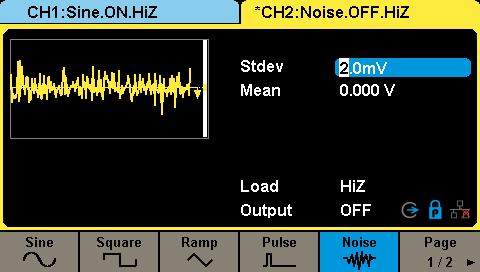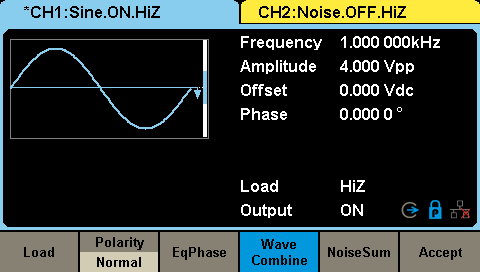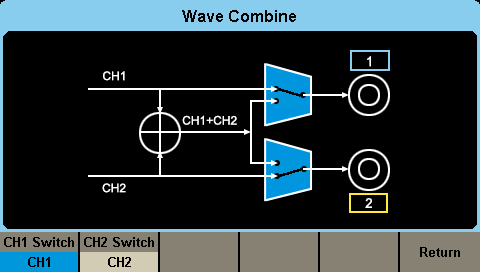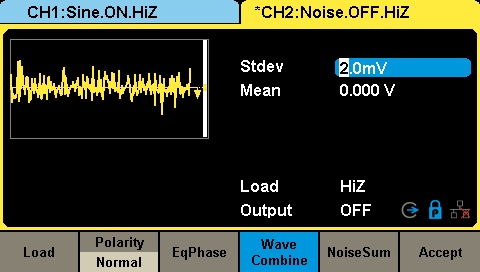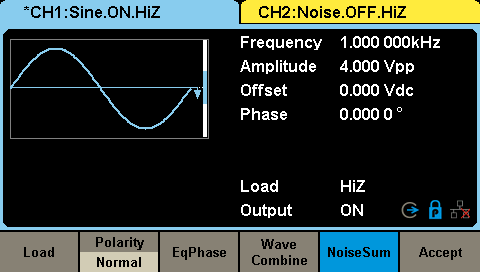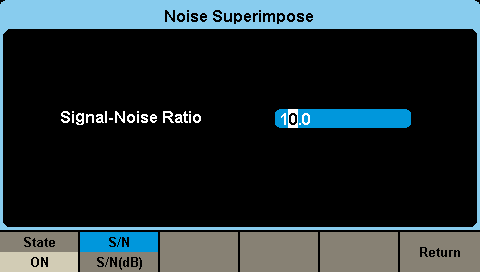Waveform Combination and adding noise to SDG1000X, SDG2000X, and SDG6000X generator output signals
May 4, 2018
The X series of SIGLENT SDG arbitrary generators, including the 1000X, 2000X, and 6000X models, offer a large array of adjustments and features that can make common tasks quite simple. One common application is to add a certain amount of noise to a standard waveform and then adjust the characteristics of the noise level. This can be helpful in testing how certain levels and frequencies of noise can affect your design.
Waveform Addition:
The SDG1000X, 2000X, and 6000X all feature a waveform combination function that will mathematically add CH1 and CH2 waveforms together and then source the combined waveform from the user-defined output. This can be used to combine any available waveforms, including user-defined arbitrary waveforms.
For the purpose of this note, we are going to configure CH1 as a sine wave and CH2 as a noise source, then activate the waveform combination function and view the output waveform.
- Configure CH1: Set the waveform type to Sine and set the amplitude by pressing Parameter and adjusting the parameter settings to the appropriate value.
Here we have a 1 kHz, 4 Vpp sine wave: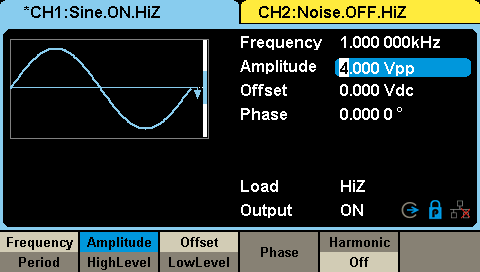
2. Now, configure CH2. Press CH2 > Waveforms and select Noise:
You can set the Stdev and Mean values using the Parameters button or the keypad/scroll wheel:
3. Enable Waveform Combine. This will mathematically sum CH1 and CH2 and output the sum through the set channel.
Press Utility > Output Setup:
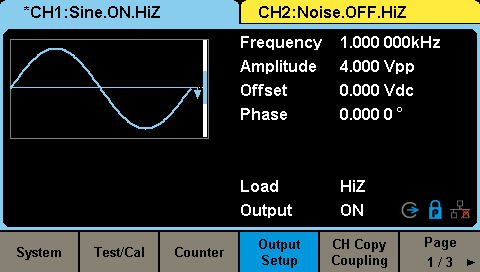
5. Press CH1 Switch so that it shows CH1 + CH2 and then press Return. This combines CH1 and CH2 outputs and delivers the summed waveform to CH1 output:
6. Now, you can connect CH1 to an oscilloscope and observe the output.
CH1 is the sine wave and CH2 is superimposed onto CH1. So, if you want to change the parameters of the noise, select CH2 and adjust the parameters to suit your needs:
Here are a few scope displays with the noise set to various values:
Stdev = 2 mV
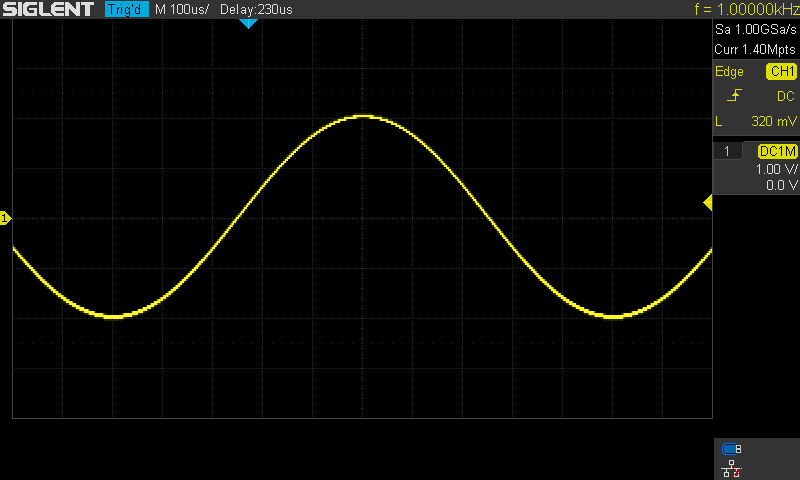
Stdev = 500 mV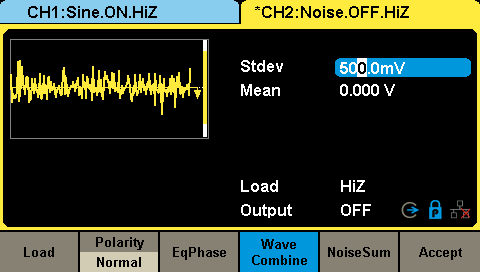

The SDG6000X Series also includes a special function called Noise Sum, which also adds noise, but it has slightly different parameters.
- Press Utility > Output Setup > Noise Sum
2. Now, set State = ON and adjust the Signal-to-Noise (or S/N in dB) ratio:

